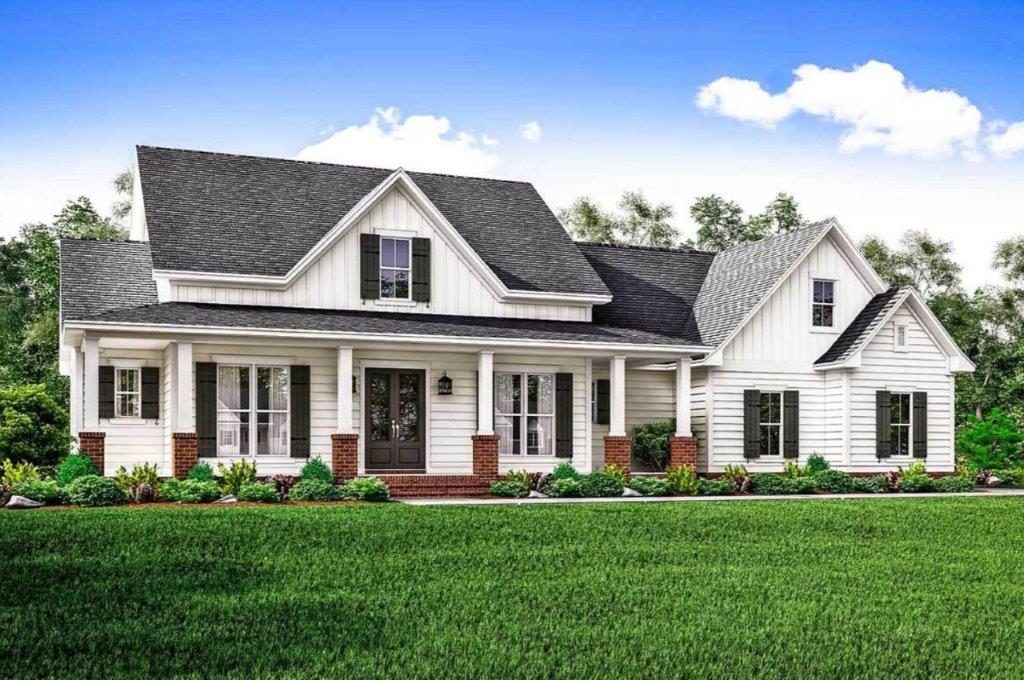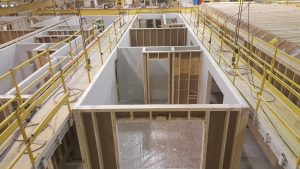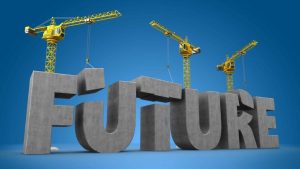Get it Fast AND Right with Modular Construction


One of the old sayings that applies to buying just about anything is that you can have it fast OR you can have it right, but you can’t have both. Using modular construction to build your new custom home turns that saying on its head. The whole premise behind modular construction is to take advantage of two main tenants of factory construction; to build quickly and to build correctly AND in addition, to do it consistently each and every time.
Turning Home Construction into a Manufacturing Process
Think about the current method of custom home construction. It is one of the only processes left today that is largely done outdoors. One hundred and seventy five years ago some construction guys figured out that it just wasn’t efficient to build windows and doors onsite and install them in a newly built home (yes, they actually used to build the doors and windows on the jobsite and install them in each home). Since that great epiphany, it has taken about another one hundred and fifty years before people started to believe that it may make sense to build larger components of a home in a factory and deliver them to the home site.
It comes down to process. In the field, building a custom home is chaotic at best. Dozens of trades and dozens of suppliers have to all travel to a single point for a brief period of time to work on a single home. A subcontractor may be working at a location 50 miles east of them this week and then at a location 30 miles south of them the next week. Construction has to happen in order. You can’t install the drywall until the wiring is done. You can’t install wiring until the framing is done. A subcontractor can’t get to the house to the south of him until he completes the home he is working on to the east of him.
RELATED: A PRODUCTION HOME OR A CUSTOM HOME: WHICH ONE IS RIGHT FOR YOU?
A subcontractor can’t be sure all the materials he needs to do his job are at the jobsite until he gets there and inventories what has been delivered. All of the deliveries are left outside in piles or may be left in an unsecured, unfinished home and barely covered or protected. The process is loosely followed for every home and it’s riddled with opportunities for expensive mistakes, misunderstandings, and multitudes of schedule delays.
By moving the process indoors, it turns the construction process into a manufacturing process. Some basic characteristics of building anything using a factory process include: economies of scale, centralized production, standardization and uniformity, and use of a trained and consistent workforce. By making custom home construction a manufacturing process, the chaos of building a home in the field is replaced with the consistency only found in a factory production environment.
Speed Kills – Just Not in the Factory Building Process
 There are dozens of modular home factories in the U.S. and no two of them are exactly alike. As Americans, we pride ourselves in believing we can always do it better each and every time. That same thinking is pervasive in the modular home industry. Each factory is built a little differently as each factory designer believed they had a way to improve the factory production process to build their modules better and/or faster.
There are dozens of modular home factories in the U.S. and no two of them are exactly alike. As Americans, we pride ourselves in believing we can always do it better each and every time. That same thinking is pervasive in the modular home industry. Each factory is built a little differently as each factory designer believed they had a way to improve the factory production process to build their modules better and/or faster.
Factory construction increases the speed of production while simultaneously enhancing the quality of the product. Here’s why:
Centralization – Workers and tools are brought together in a factory that is specifically designed to handle the machinery/tools needed for home construction and to handle the flow of materials efficiently. It helps eliminate issues dealing with theft and damage of tools and materials common on home sites today.
Standardization and Uniformity – This isn’t just for the overall construction of modules that make up a modular home but also for components. A factory actually makes smaller components of homes in the factory and then assembles those smaller components into the larger component we call a module. By guaranteeing that each and every smaller component is built to an exacting specification and then insuring it is assembled correctly, the quality of the larger product/module is insured.
Economies of Scale – Custom home construction is just that, custom. Each home is different, each location is different, and the characteristics of each home site are different. Concentrating custom home construction in a factory means that purchasing agents are buying materials common to all custom homes in bulk. This allows them to achieve pricing far better than can be achieved when buying materials a pickup truck load at a time. Think about how buying from Costco works. The factory is using a lot of everything to build so many homes so quickly in a single location.
Labor – Today, labor is the #1 issue in home construction. Since the great recession, the single biggest obstacle for every home builder is finding a skilled craftsman to work for them to produce quality homes. Factories concentrate the labor in one location and bring consistency to employee’s lives. Paychecks don’t depend on the weather. Homes are built everyday indoors. Unskilled employees are trained to perform specific tasks in a specific and consistent manner. With the division of labor, an employee doesn’t have to do ten things on a jobsite and do them just good enough. He/She is trained to do one or two things very well and they do them consistently every day.
Because of the assembly line process, the actual time to build the factory portion of a new custom home can be as little as 2-3 days. This speed is achieved with the highest level of quality and consistency, far better than most homes constructed entirely onsite, because of the advantage inherent in the manufacturing process. That’s why everything else you buy today; your phone, your computer, and your car is built in a factory.
The Advantage Goes to Modular Construction
Compare the two processes, building a home outdoors or building a home in a factory. Take everything you know about the products you already buy that are built in a factory and compare that with home construction. Can you imagine making any of those items in your home or in your backyard? Could you make that product as quickly or with the same level of quality that it is currently provided at when built in a factory?
The custom modular home building process is just that, a process. It is designed to build custom homes fast and right…. every time. Modern modular construction is becoming the preferred way for both builders and homebuyers to build custom homes today!
The post Get it Fast AND Right with Modular Construction appeared first on Impresa Modular.




